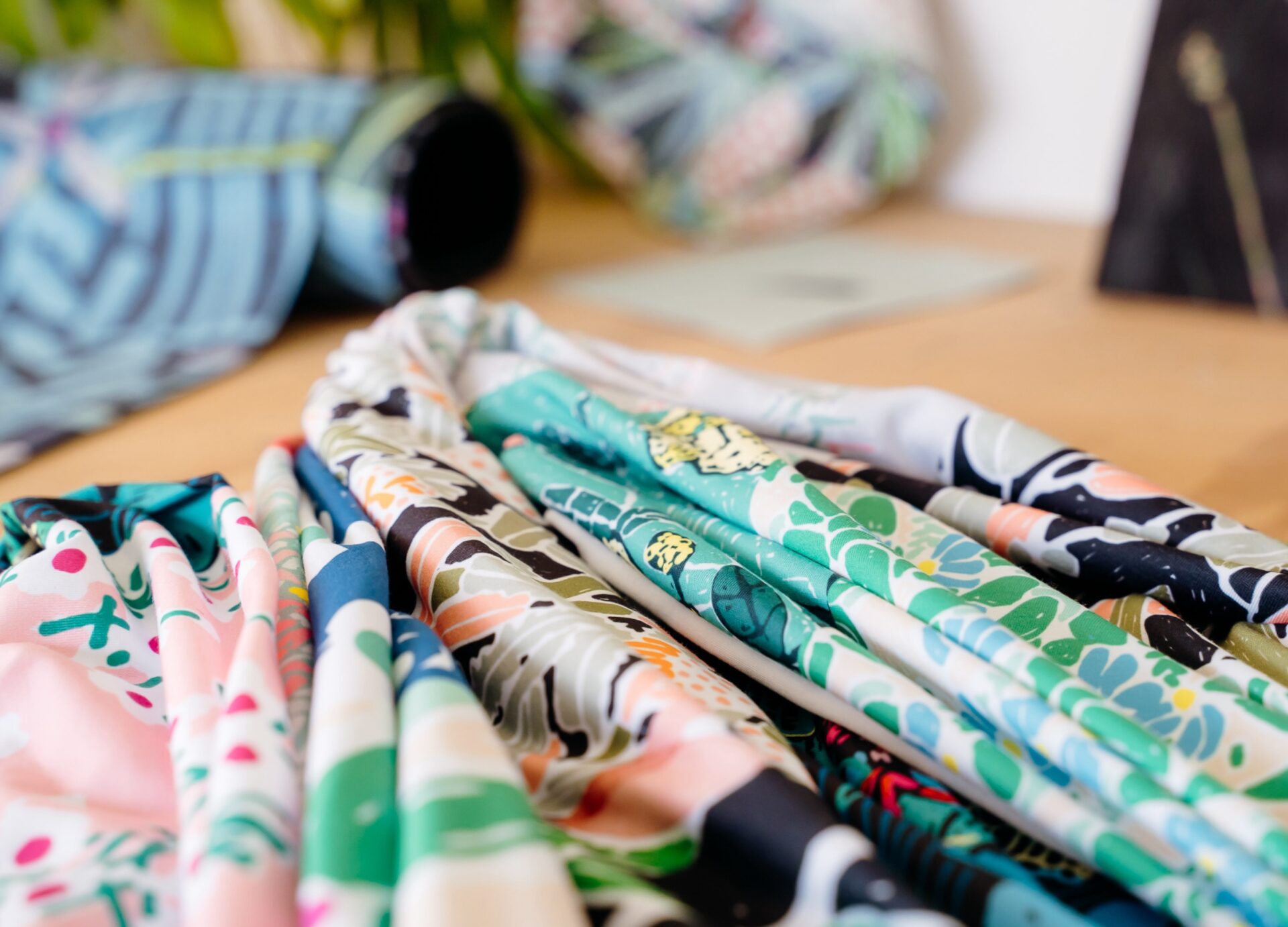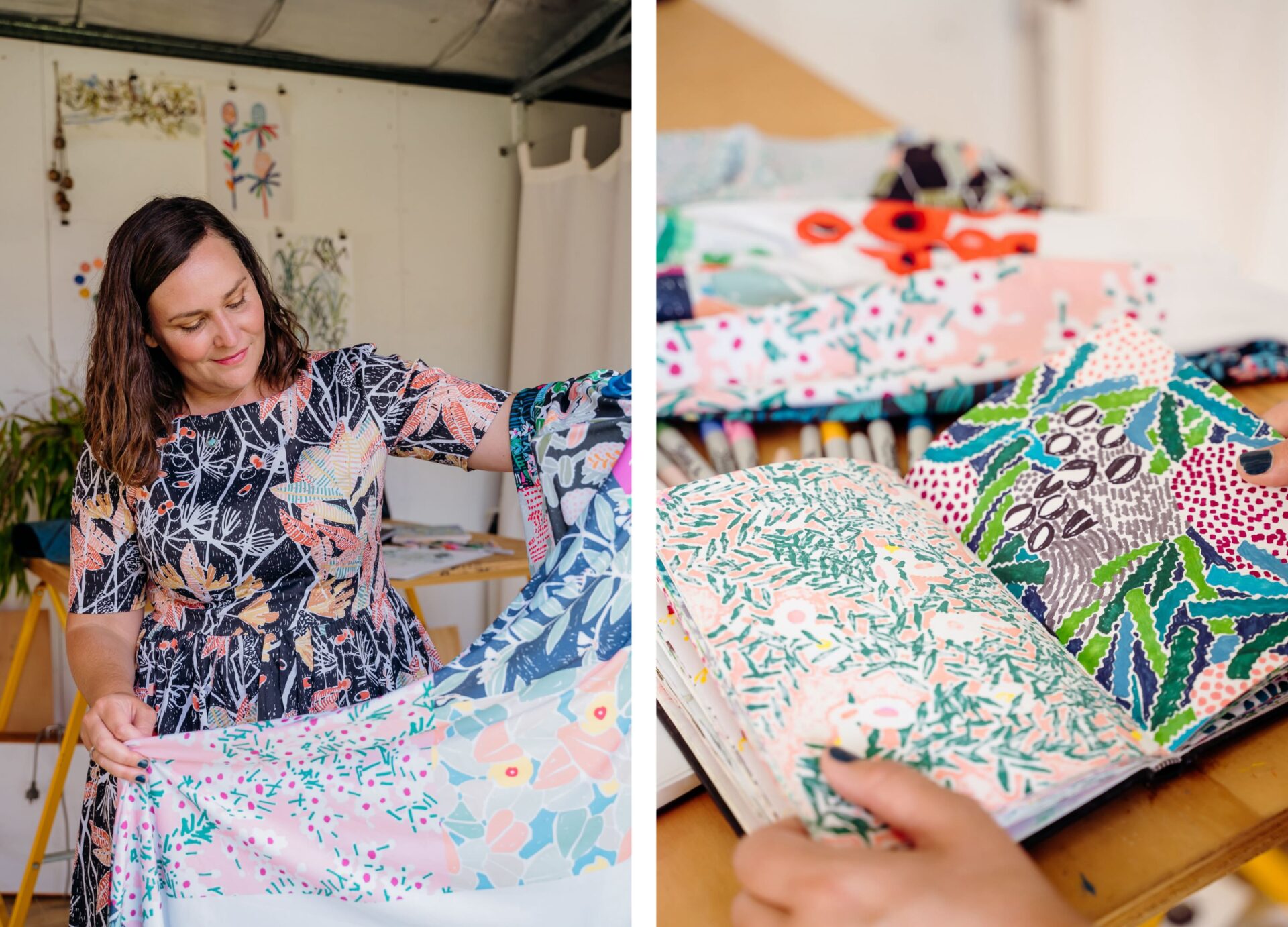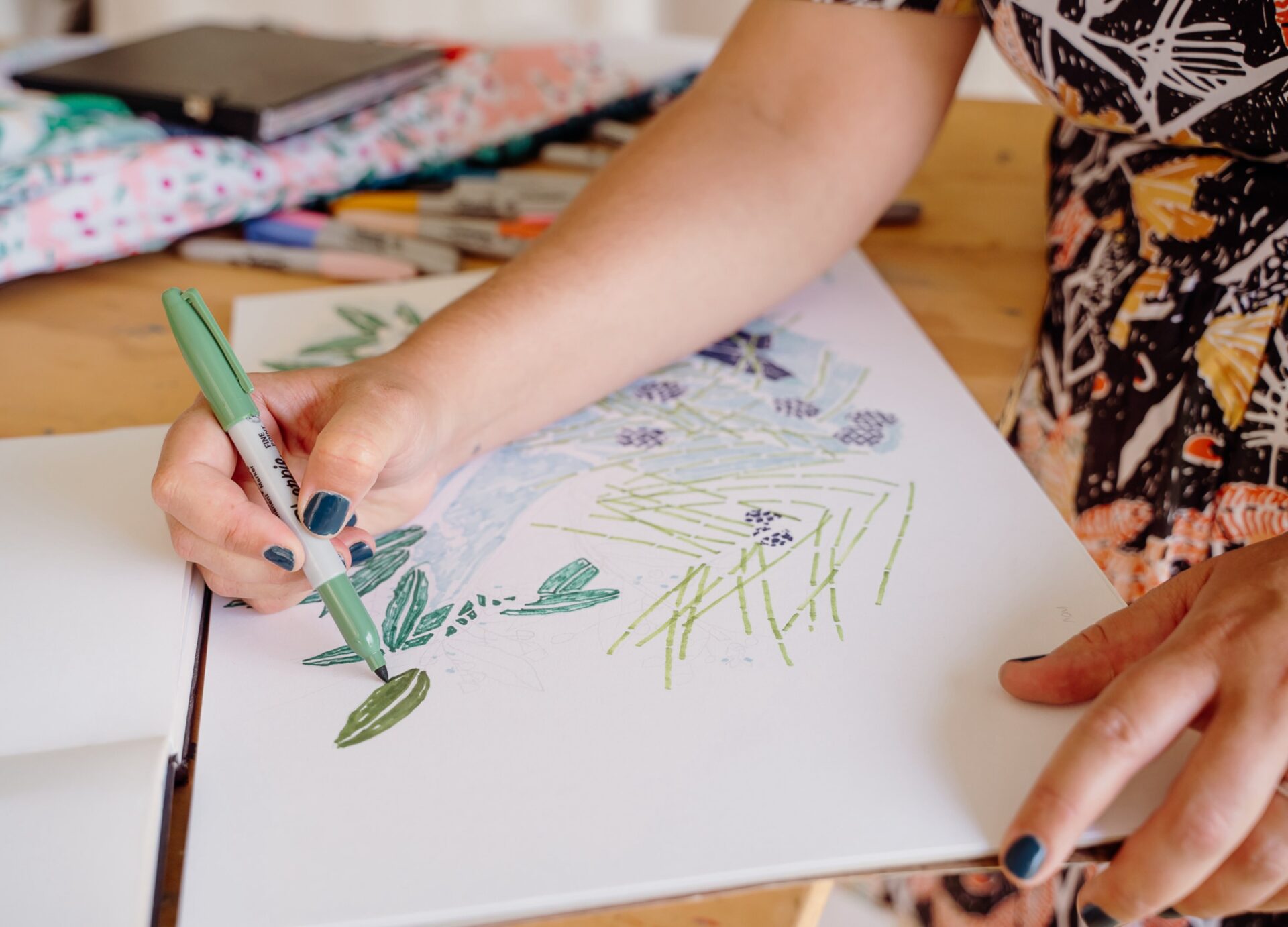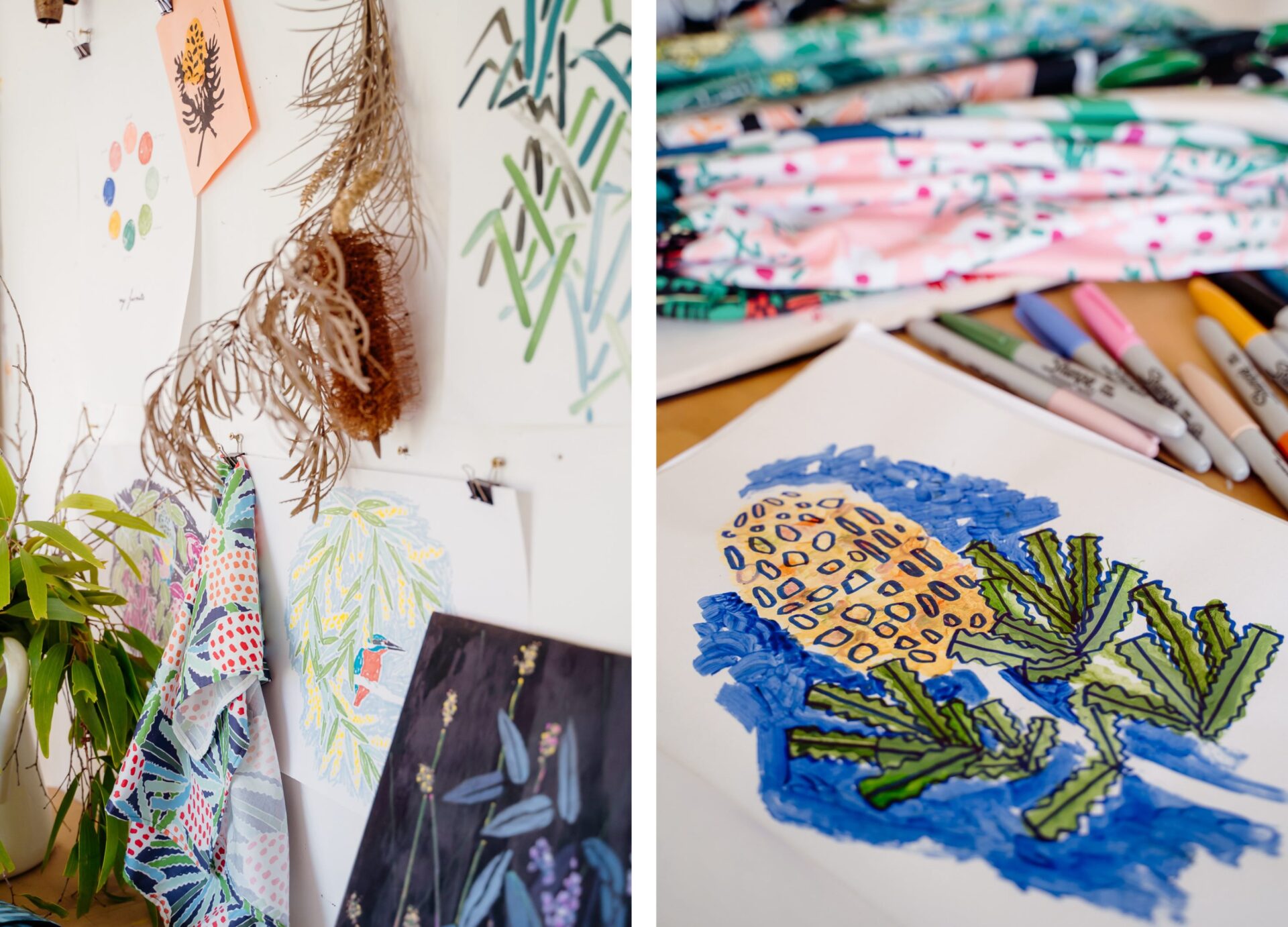
Of Place And Process With Surface Pattern Designer Marni Stuart
Residing on Gubbi Gubbi Country, Australian designer and senior lecturer at Torrens University, Marni Stuart, creates surface patterns for fabrics that celebrate and respond to the native habitats of the coastal region she calls home.
PHOTOS KELLEY SHEENAN

A lot of your artistic inspiration is drawn from Australian natives. What calls to you about them?
My one rule for making at the moment is to begin with a physical interaction with the items I draw. I’m searching for an authentic response to what I experience to avoid working from found references. For now, that links me to the plants, and now occasionally animals, that are endemic to the land around my home on the Sunshine Coast.
I’m fascinated by the subtle complexity that has developed for millennia before my arrival. It’s a constant reminder of what came before, in particular, the relationships built by the Gubbi Gubbi people to the Country they cared for.
What does your creative process look like?
I’m currently three-quarters of the way through a creative practice PhD, which has me spending a lot of time exploring the intricacies of each section of my creative process! It’s transitioned through my research, and will likely continue to evolve after I’m done. But as it currently stands, my process starts with the act of walking through, or just being within, pockets of nature, opening my thoughts to the sights and sounds that I’m experiencing.
Sparks of inspiration begin to trickle in during the walk and swirl in my thoughts to form the beginnings of a design. I stop walking at different times to note down these thoughts in the form of rough sketches. Once the image has begun to form, I return to the studio where I sketch the ideas again and again until I’m able to replicate the mental image formed and translate the feeling of the experience.
To help capture the specifics, I’ve begun working with larger and larger motifs, some as large as A2, that are drawn in marker and scanned to be placed into repeat. I’m really enjoying the challenge of repeating these complex, oddly shaped forms.
 Your PhD explores making as a response to place within a surface patterning practice – how would you explain this and what has your research found?
Your PhD explores making as a response to place within a surface patterning practice – how would you explain this and what has your research found?
Both a designer and an educator, I’ve been lecturing in design for over a decade and a PhD is increasingly becoming the industry standard for academia, so it has long been on the to-do list. My research aims to map out an approach to making that other designers can use to enhance their own practice, whether it be patterning or any other creative discipline. The goal of the journey is to provide a method that turns makers away from the reliance on trends, found imagery or the increasing presence of artificial intelligence, to instead give us a way to authentically respond to the world around us.
READ MORE: Designer Ellie Whittaker on Spreading Fabric Joy and Making a Fool of Herself
Making in response to place is about using our senses beyond sight – exploring touch, taste, smell, sound and even senses like balance or interoception – to gather information about our experience that we might have otherwise missed. These senses are perceived within the mind where they’re combined with memories of previous experiences or past creative works to produce the sparks of a new design. Through repetitive walks or inhabiting of place, we can continue to train our knack of ‘seeing’ to take in more and more of our experience and use it to continually ignite new ideas.
 What is your favourite thing about using Spoonflower?
What is your favourite thing about using Spoonflower?
I think print-on-demand brings a lot to the table. I love including Spoonflower as a teaching resource within my courses as it hands over so much freedom and power to my students. As one of the last tasks of my surface patterning course, I ask my students to upload one of their works to Spoonflower to print a strike-off. From there, I show them that they can make this work available for sale.
The process becomes a flowing path of communication between the designer and audience that is wonderfully liberating.
Through this step, I feel like I’m pushing the baby bird out of the nest; I’m encouraging the students to send their work out in the world so they can start to build their brand and their audience. We’re so lucky to have companies like Spoonflower that can make the industry so accessible for students even before they graduate.
Print-on-demand also gives us designers and makers so much control and feedback. We don’t have to rely on others to decide which designs are going to be made available or what colours they’ll be in. We can easily load every option and receive feedback from our customers that will show us which ones they’d like to see more of. The process becomes a flowing path of communication between the designer and audience that is wonderfully liberating.

